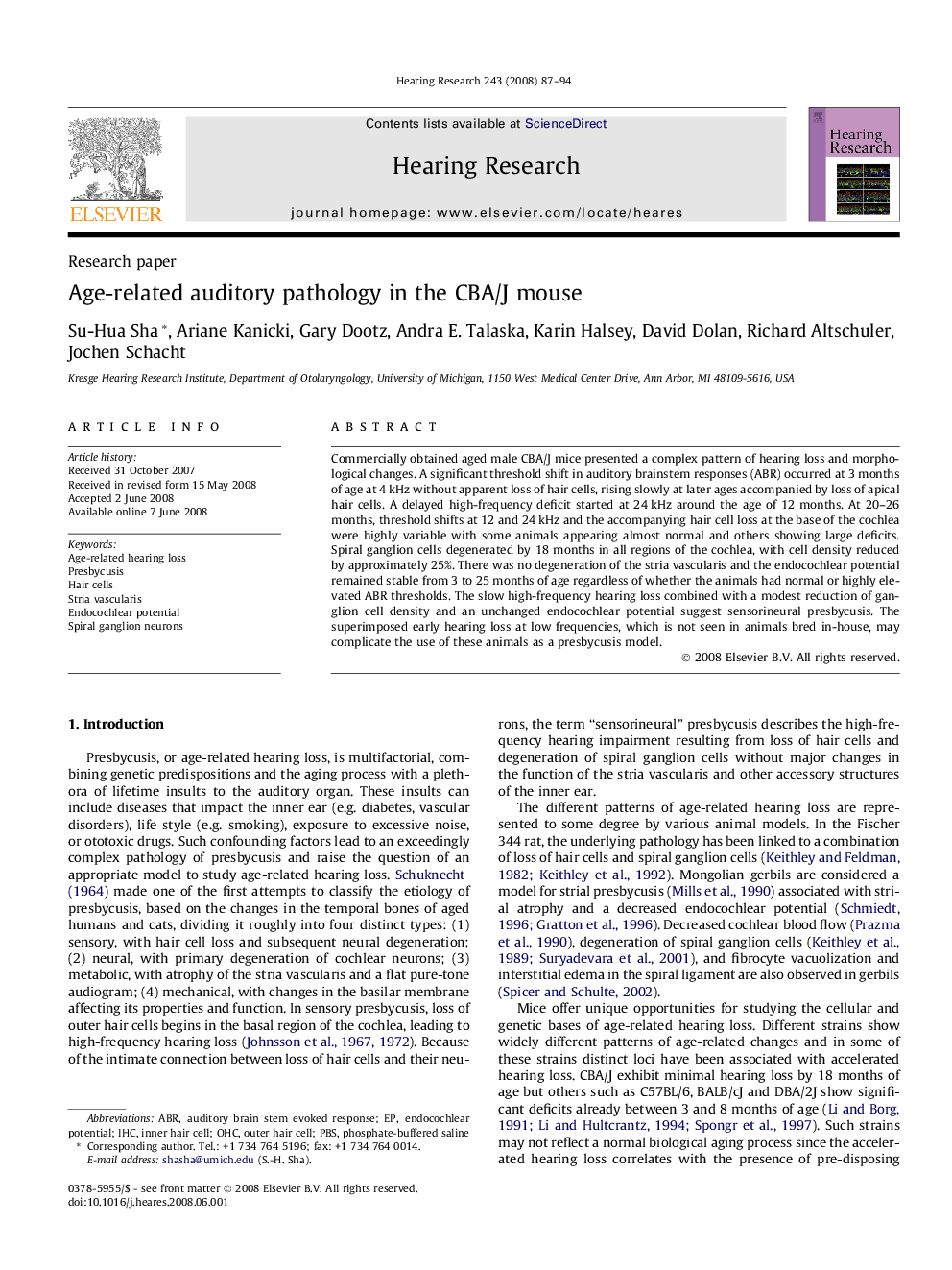| Article ID | Journal | Published Year | Pages | File Type |
|---|---|---|---|---|
| 4356042 | Hearing Research | 2008 | 8 Pages |
Commercially obtained aged male CBA/J mice presented a complex pattern of hearing loss and morphological changes. A significant threshold shift in auditory brainstem responses (ABR) occurred at 3 months of age at 4 kHz without apparent loss of hair cells, rising slowly at later ages accompanied by loss of apical hair cells. A delayed high-frequency deficit started at 24 kHz around the age of 12 months. At 20–26 months, threshold shifts at 12 and 24 kHz and the accompanying hair cell loss at the base of the cochlea were highly variable with some animals appearing almost normal and others showing large deficits. Spiral ganglion cells degenerated by 18 months in all regions of the cochlea, with cell density reduced by approximately 25%. There was no degeneration of the stria vascularis and the endocochlear potential remained stable from 3 to 25 months of age regardless of whether the animals had normal or highly elevated ABR thresholds. The slow high-frequency hearing loss combined with a modest reduction of ganglion cell density and an unchanged endocochlear potential suggest sensorineural presbycusis. The superimposed early hearing loss at low frequencies, which is not seen in animals bred in-house, may complicate the use of these animals as a presbycusis model.
